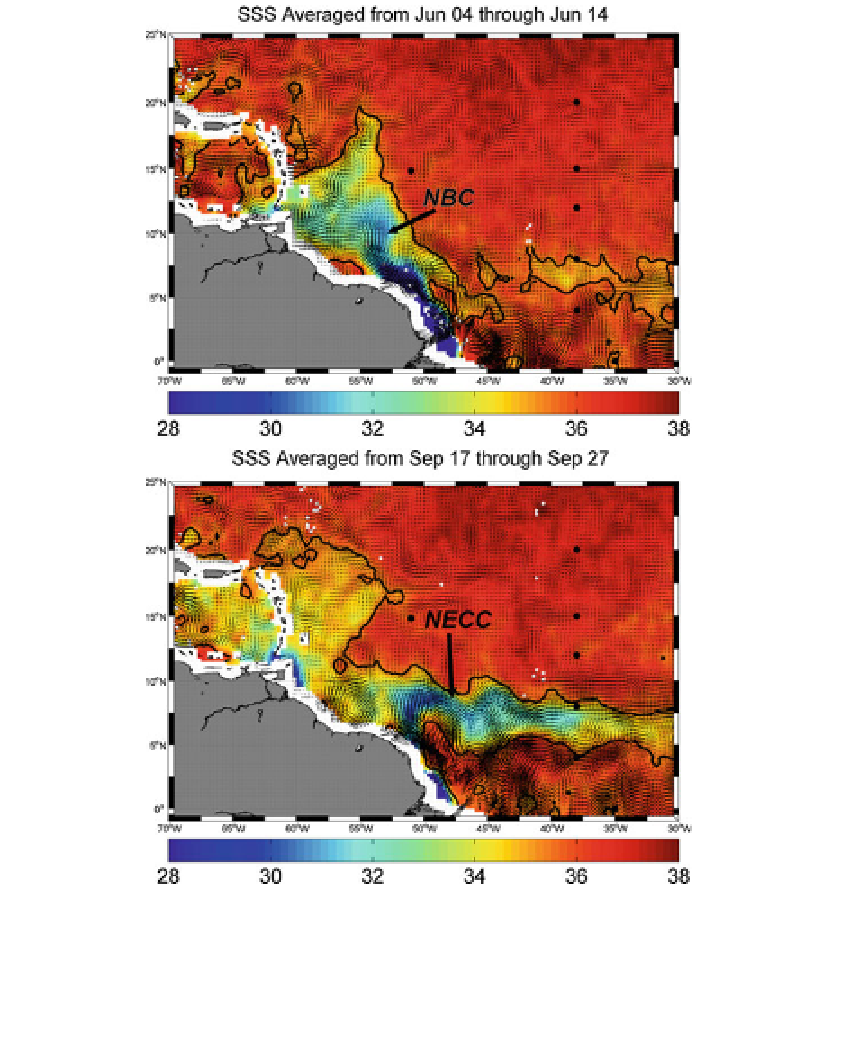Geoscience Reference
In-Depth Information
Fig. 3 Major pathways for the freshwater Amazon-Orinoco River plume detected by SMOS in 2010.
Surface salinity fields from SMOS are superimposed with coinciding surface OSCAR currents estimated
from altimetry and surface wind data. Top: the freshwater Amazon River plume is advected northwestward
along the Brazilian Shelf by the North Brazilian Current (NBC) during boreal spring. Bottom: during boreal
summer to fall period, the Amazon plume is carried eastward by the NECC. Note also the signal from the
Orinoco River plume extending northeastward along the southern lesser Antilles. In both plots, the thick
black curve is indicating the 35 SSS contour
largest riverine flux of suspended (1,200 Mt year
-1
) and dissolved matter (287 Mt year
-1
),
which includes a dissolved organic matter (DOM) flux of 139 Mt year
-1
(Meybeck and
Ragu
1997
). These fluxes can have a dramatic effect on regional ecology as they represent
potential subsidies of organic carbon, nutrients, and light attenuation into an otherwise
oligotrophic environment (Muller-Karger et al.
1995
).
In the regions closest to the Amazon plume, light attenuation by suspended detritus acts
as the main limitation to phytoplankton growth (DeMaster et al.
1996
). Away from this
region, as mineral detritus is removed by sinking, absorption attributable to organic

